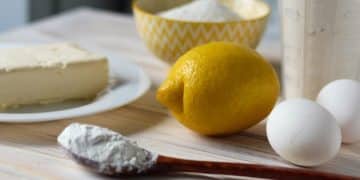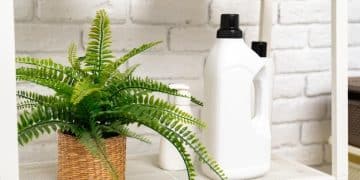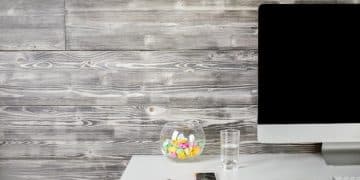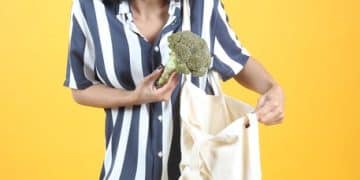DIY Green Cleaning: Non-Toxic Cleaners & Save $100+ Yearly
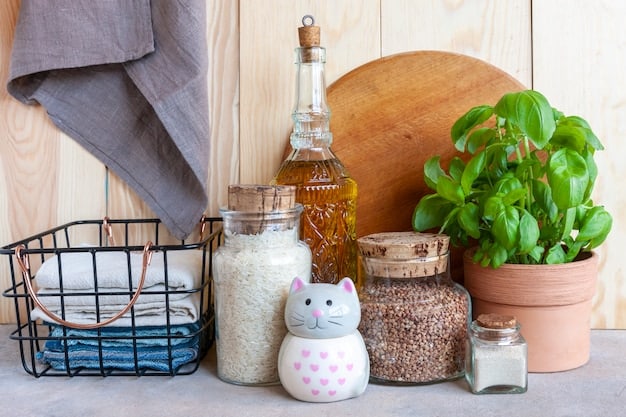
DIY green cleaning products offer a safe, cost-effective alternative to commercial cleaners, allowing you to easily create non-toxic solutions at home and potentially save over $100 per year by using common household ingredients like vinegar, baking soda, and essential oils.
Embrace a healthier home and wallet by creating your own DIY green cleaning products. This guide shows you how to ditch the harsh chemicals, save money, and clean your home effectively with simple, non-toxic ingredients.
Why Choose DIY Green Cleaning Products?
Switching to DIY green cleaning products offers numerous benefits for your health, the environment, and your wallet. Let’s explore why making your own cleaners is an excellent choice.
Firstly, you know exactly what goes into your cleaning solutions.
Healthier Home Environment
Commercial cleaners often contain harsh chemicals like phthalates, ammonia, and chlorine, which can cause respiratory problems, skin irritation, and even hormone disruption. By making your own cleaners, you eliminate these harmful substances from your home, creating a safer environment for you and your family.
Reduced Environmental Impact
Traditional cleaning products contribute to pollution through manufacturing processes, packaging waste, and the release of harmful chemicals into the environment. DIY green cleaners use biodegradable ingredients and reusable containers, significantly reducing your environmental footprint.
- Minimize exposure to harmful chemicals found in commercial cleaners.
- Reduce plastic waste by reusing spray bottles and containers.
- Help prevent water pollution by using biodegradable ingredients.
- Lower your carbon footprint by reducing transportation emissions.
Making the switch offers substantial environmental benefits.
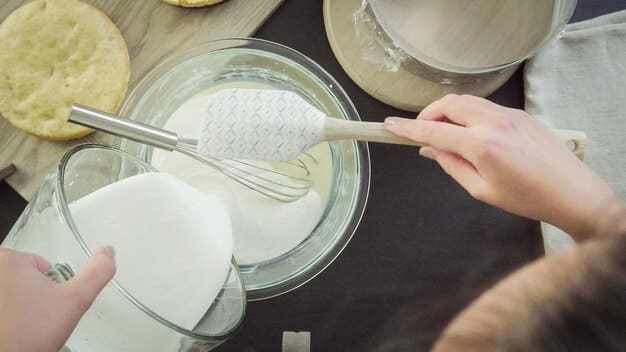
Essential Ingredients for DIY Green Cleaning
Creating your own green cleaning products requires only a handful of common household ingredients. These ingredients are not only effective but also safe and readily available.
Let’s take a look at some of the most important ingredients to have on hand.
Vinegar
Vinegar, especially white distilled vinegar, is a versatile cleaner and disinfectant. Its acidity helps cut through grease, remove stains, and kill bacteria. It’s also an inexpensive and readily available ingredient.
Baking Soda
Baking soda is a mild abrasive and deodorizer. It’s great for scrubbing surfaces, removing odors, and neutralizing acids. Its gentle nature makes it safe for use on most surfaces.
- Essential oils: Add fragrance and antibacterial properties.
- Lemons: Natural disinfectant and degreaser with a fresh scent.
- Castile soap: Gentle, all-purpose cleaner made from vegetable oils.
These ingredients can be mixed and customized in various formulations.
Simple DIY Green Cleaning Recipes
Now that you know the essential ingredients, let’s dive into some simple and effective DIY green cleaning recipes. These recipes are easy to follow and require minimal preparation.
These solutions will cover most of your cleaning needs.
All-Purpose Cleaner
Combine equal parts white vinegar and water in a spray bottle. Add a few drops of your favorite essential oil for fragrance. This all-purpose cleaner is great for countertops, sinks, and other surfaces.
Glass Cleaner
Mix one part white vinegar with ten parts water in a spray bottle. Spray onto glass surfaces and wipe clean with a microfiber cloth for streak-free shine.
Oven Cleaner
Sprinkle baking soda generously on the bottom of your oven. Spray with water until the baking soda forms a paste. Let it sit overnight, then scrub clean with a spatula and sponge.
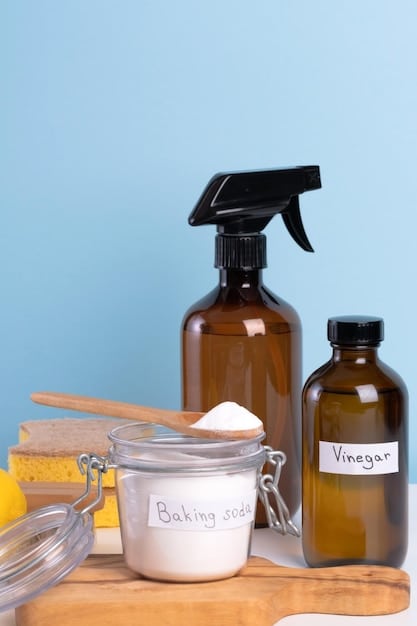
Beyond Basics: Advanced DIY Green Cleaning Tips
Once you’re comfortable with the basic recipes, you can explore more advanced techniques and formulations to tackle specific cleaning challenges. These tips can help you customize your cleaning routine and achieve even better results.
Let’s see how to maximize your green cleaning efforts.
DIY Disinfectant
Combine tea tree oil, water, and vinegar for disinfecting surfaces. Tea tree oil is naturally antibacterial and antiviral. Be sure to test on a small, inconspicuous area first.
Customizing Scents
Experiment with different essential oil blends to create your signature scents. Lavender, lemon, and eucalyptus are popular choices for their pleasant aromas and added cleaning benefits.
- Store in dark glass bottles to preserve essential oil potency.
- Label bottles clearly to avoid confusion.
- Always test new recipes on a small area first, especially on delicate surfaces.
Experiment to discover your own combinations.
Saving Money with DIY Green Cleaning
One of the most appealing aspects of switching to DIY green cleaning products is the potential for significant cost savings. By using simple, inexpensive ingredients, you can drastically reduce your spending on cleaning supplies.
The benefits extend far beyond just cleaning.
Comparing Costs
A bottle of commercial all-purpose cleaner can cost upwards of $5, while a DIY version made with vinegar and water costs only pennies. Over time, these savings add up substantially.
Bulk Buying
Purchase essential ingredients like vinegar and baking soda in bulk to save even more money. These versatile ingredients can be used in a variety of cleaning recipes.
- Repurpose old spray bottles and containers.
- Track your savings to see how much you’re reducing your expenses.
- Use concentrates wisely. Always dilute them according to instructions.
DIY cleaning will have positive impacts on your wallet.
Common Mistakes to Avoid in DIY Green Cleaning
While DIY green cleaning is generally safe and effective, there are a few common mistakes to avoid. Being aware of these potential pitfalls can help you achieve the best results and prevent any unintended consequences.
Let’s make sure to avoid rookie errors.
Mixing Incompatible Ingredients
Never mix vinegar and bleach, as this creates toxic chlorine gas. Always use ingredients separately or in recipes that are specifically designed for them.
Using Too Much Essential Oil
While essential oils are beneficial, using too much can cause skin irritation or respiratory problems. Start with a few drops and adjust as needed. Also, they can stain many things!
- Ensure proper ventilation when cleaning, especially with vinegar or essential oils.
- Store DIY cleaners safely away from children and pets.
- Research safety concerns. The components used can sometimes be dangerous.
Avoiding these mistakes make your cleaning better.
| Key Point | Brief Description |
|---|---|
| 🌱 Non-Toxic | Avoid harmful chemicals for a healthier home. |
| 💰 Cost Savings | Save over $100 yearly using basic ingredients. |
| ♻️ Eco-Friendly | Reduce waste with reusable containers. |
| 🍋 Versatile | Use ingredients like vinegar and baking soda for multiple purposes. |
FAQ: DIY Green Cleaning Products
▼
Yes, many DIY green cleaning recipes are just as effective, especially for everyday cleaning tasks. Ingredients like vinegar and baking soda have proven cleaning and disinfecting properties.
▼
While essential oils add fragrance and antibacterial properties, it’s essential to use them in moderation and ensure they are safe for the surfaces you’re cleaning. Always check before use.
▼
DIY green cleaning products generally have a shorter shelf life than commercial cleaners due to the lack of preservatives. It’s best to make small batches and use them within a few weeks.
▼
Yes, avoid using vinegar on natural stone surfaces like marble and granite, as its acidity can etch and damage them. It’s also best to avoid using vinegar on waxed furniture.
▼
Add essential oils like lemon, lavender, or eucalyptus to your DIY cleaning recipes for a pleasant scent. You can also infuse vinegar with citrus peels for a natural fragrance boost.
Conclusion
Switching to DIY green cleaning products is a simple yet powerful way to enhance your home’s health, protect the environment, and save money. By experimenting with these recipes and tips, you can create a customized cleaning routine that aligns with your values and budget, making your home cleaner and greener.
